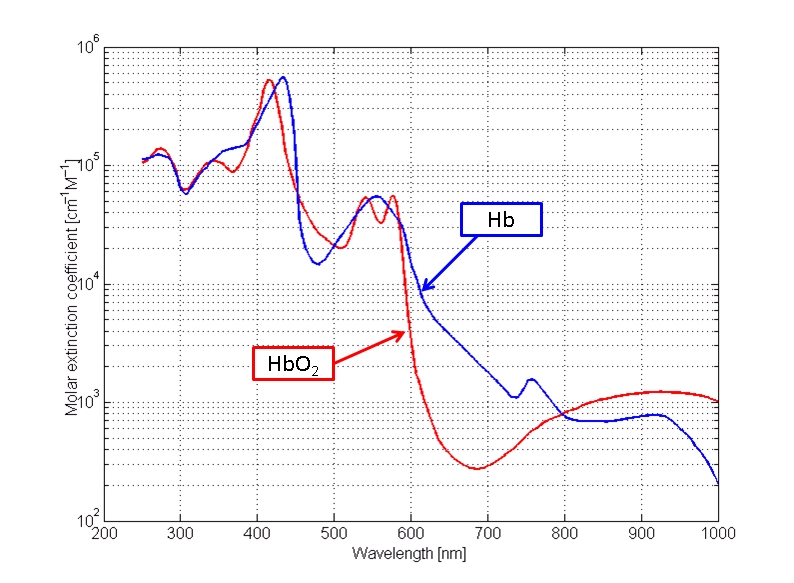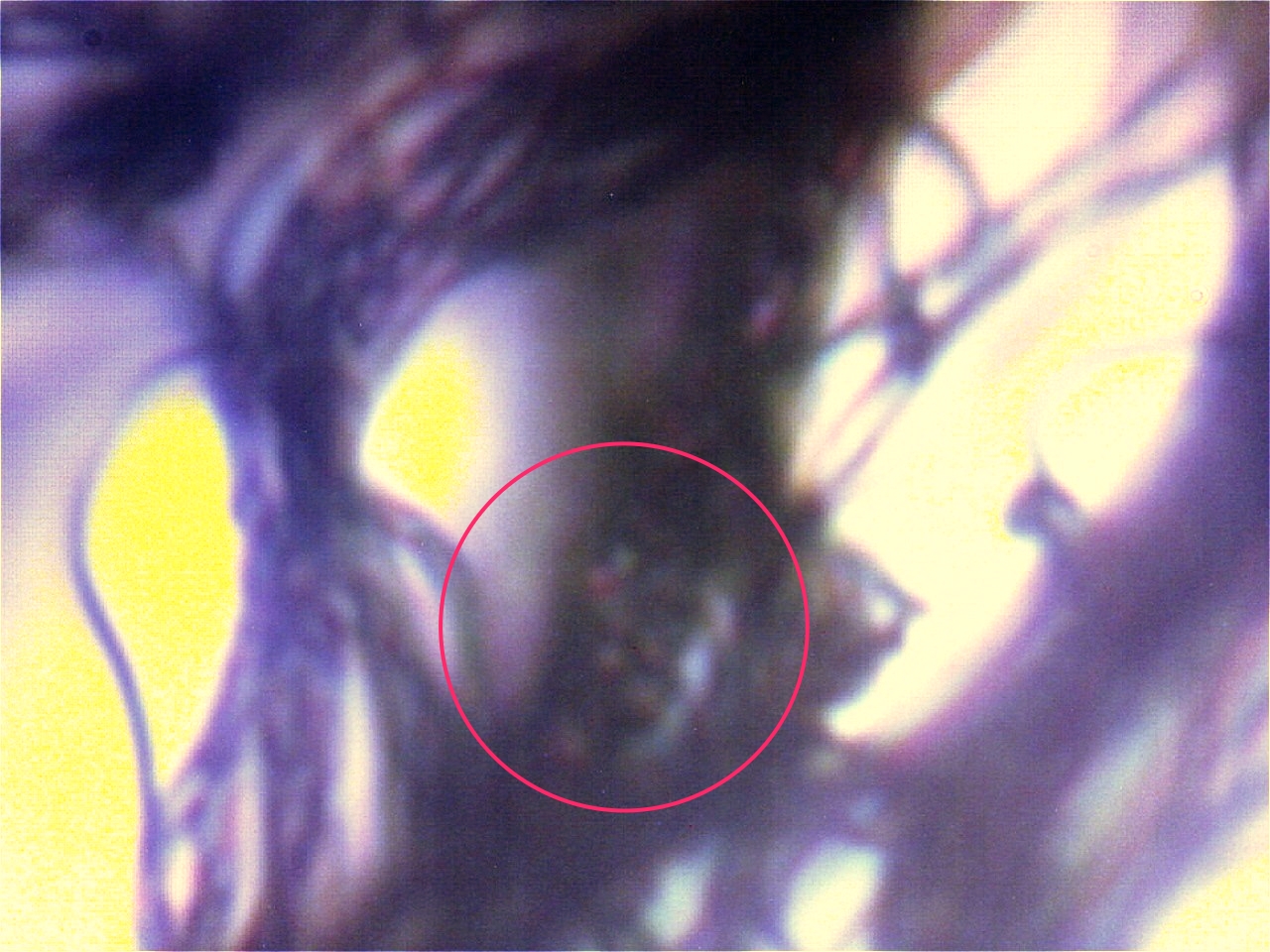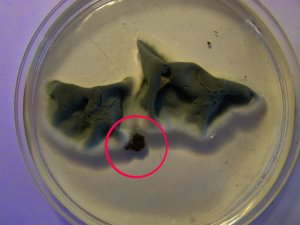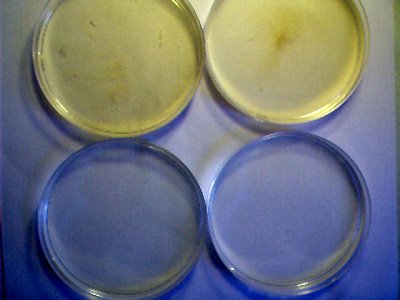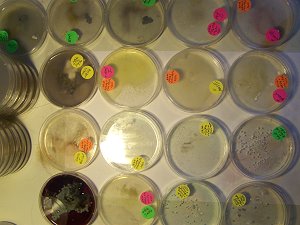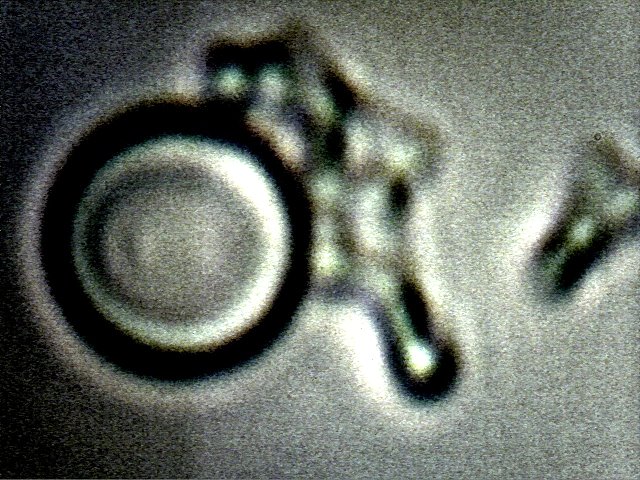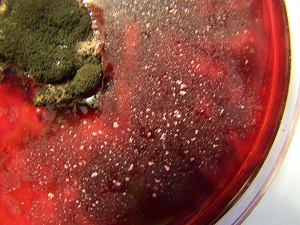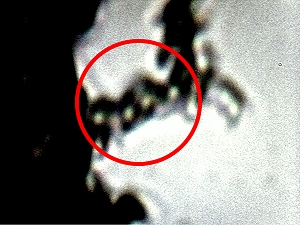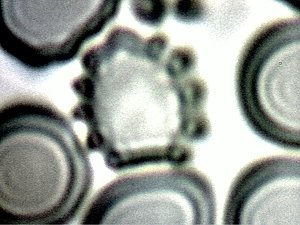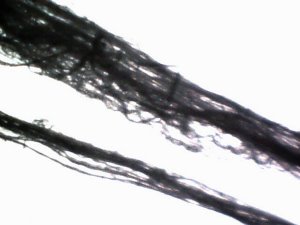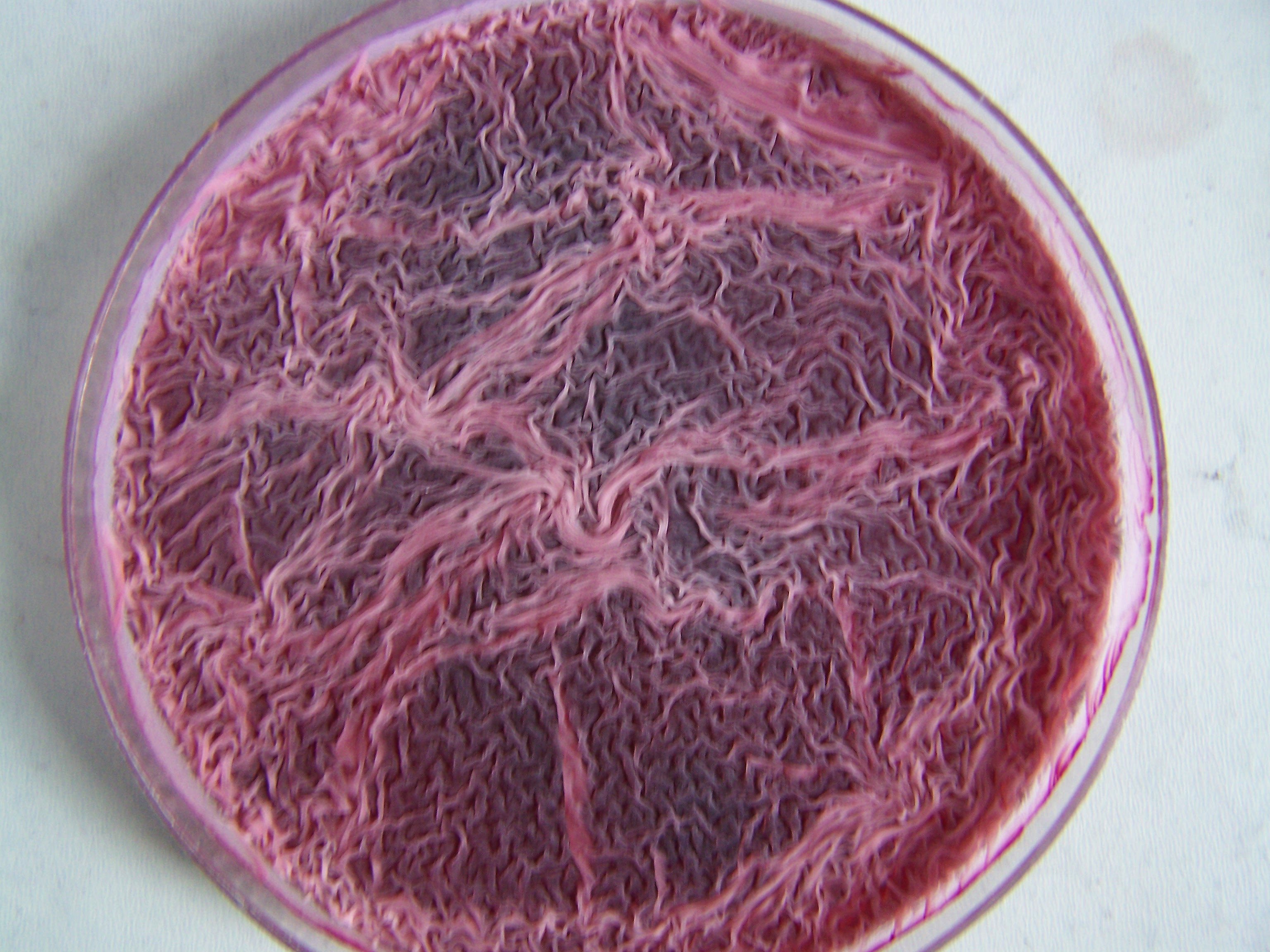
A NEW FORM : FREQUENCY INDUCED DISEASE?
A new, or modified, form of cultured growth has been developed from human oral filament samples that are characteristic of the so-called "Morgellons" condition. One of the more important findings of this current research is that the application of certain frequencies, or their harmonics, may play a highly significant role in the various manifestations (rate of growth, etc.) that the underlying "organism" may assume. The discovery reported here adds a new layer of complexity to the research that has been discussed on this site. The circumstances of growth are identical to that of previous work, i.e., the introduction of human oral filament samples within a red wine base; what differs is the illumination of the petri culture dishes with light of a specific frequency chosen from earlier absorption analysis. It will be noticed that a strong and sharp absorption peak at approximately 375 nanometers (nm) has been identified in the previous Carnicom report titled ' THE BIGGEST CRIME OF ALL TIME’ (dated March 1, 2011); this corresponds to the blue portion of the visible light spectrum. The phases of this explosive growth from this sample being subjected to this light frequency is imaged and presented on this page.

